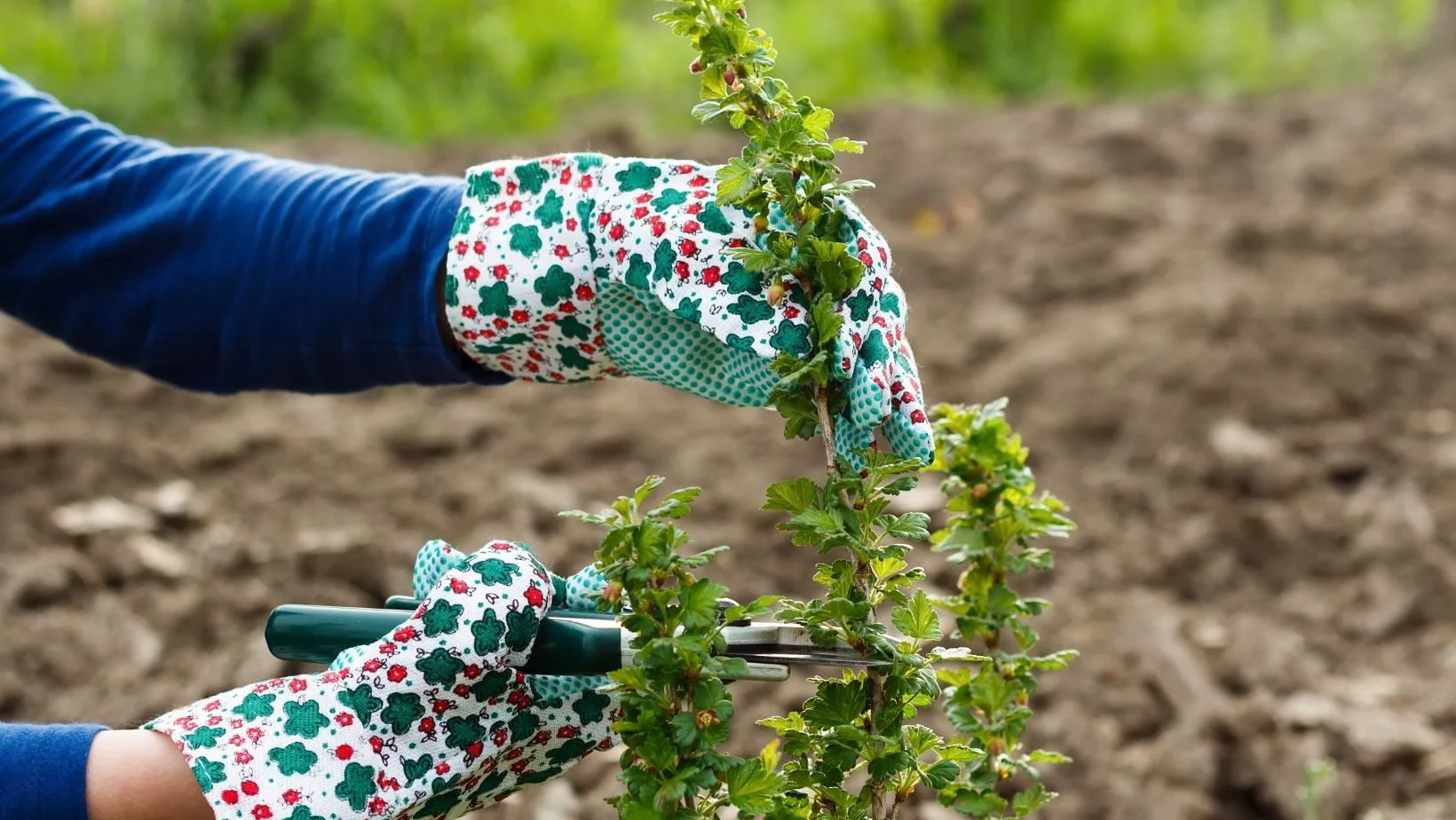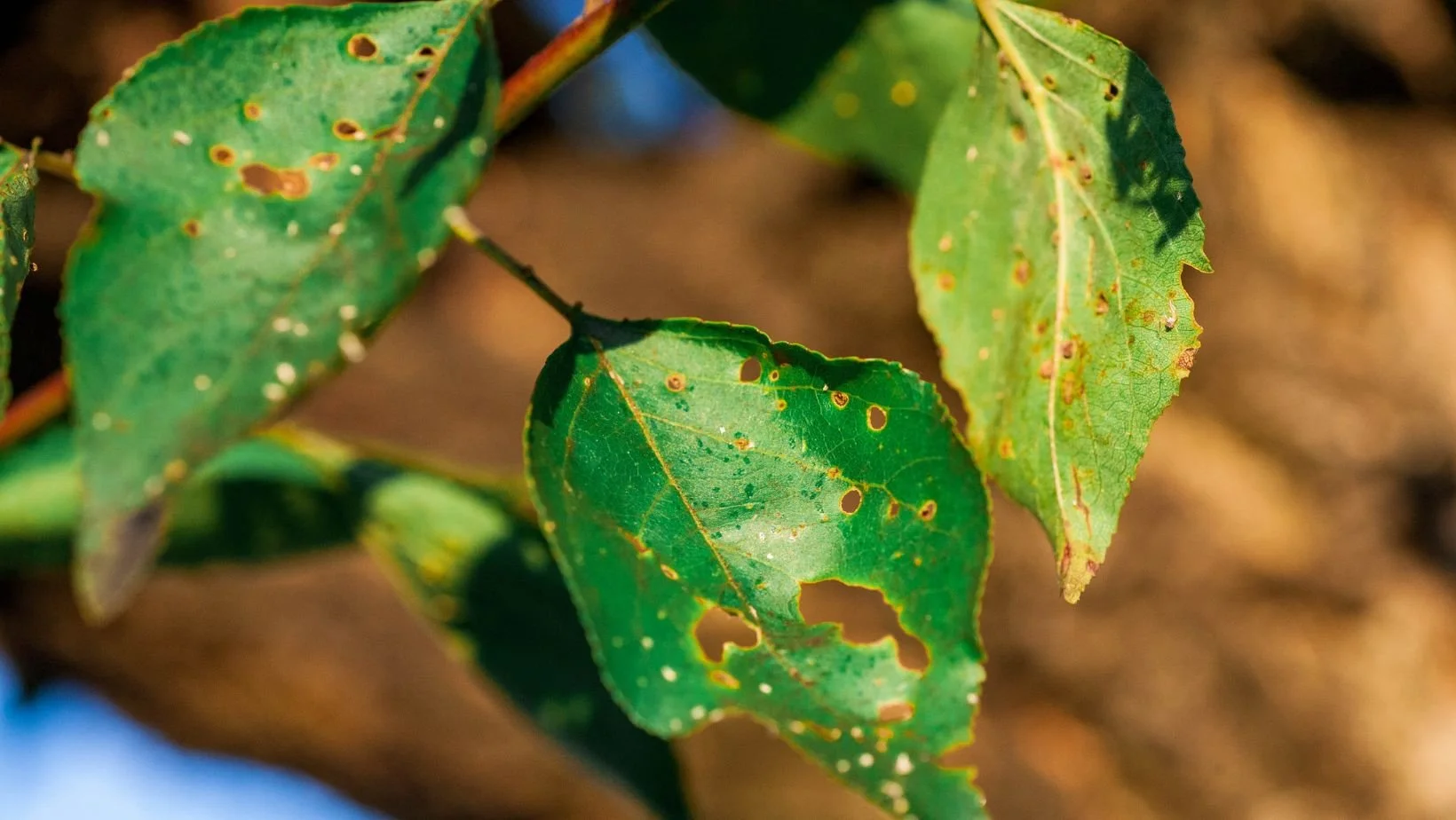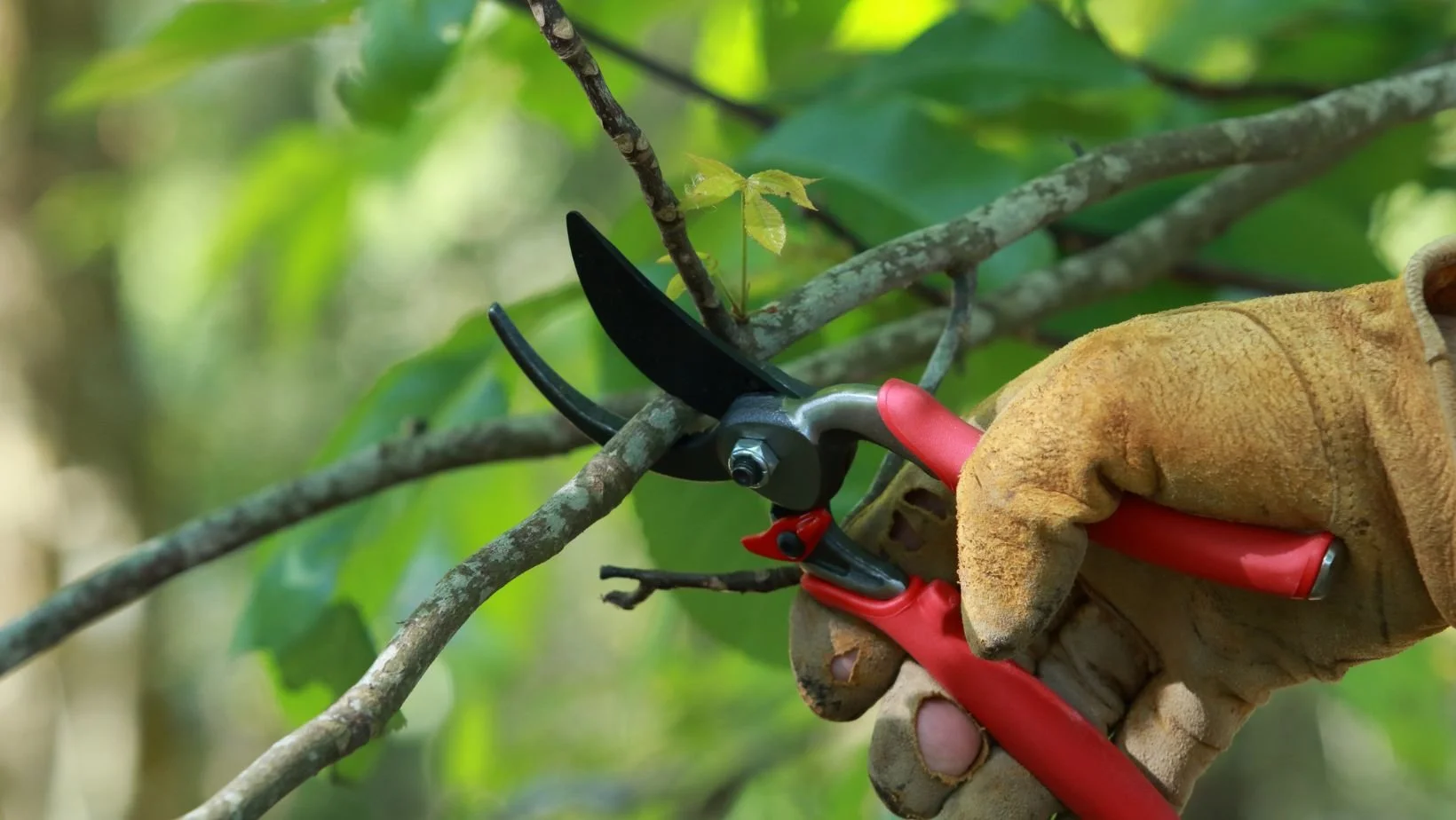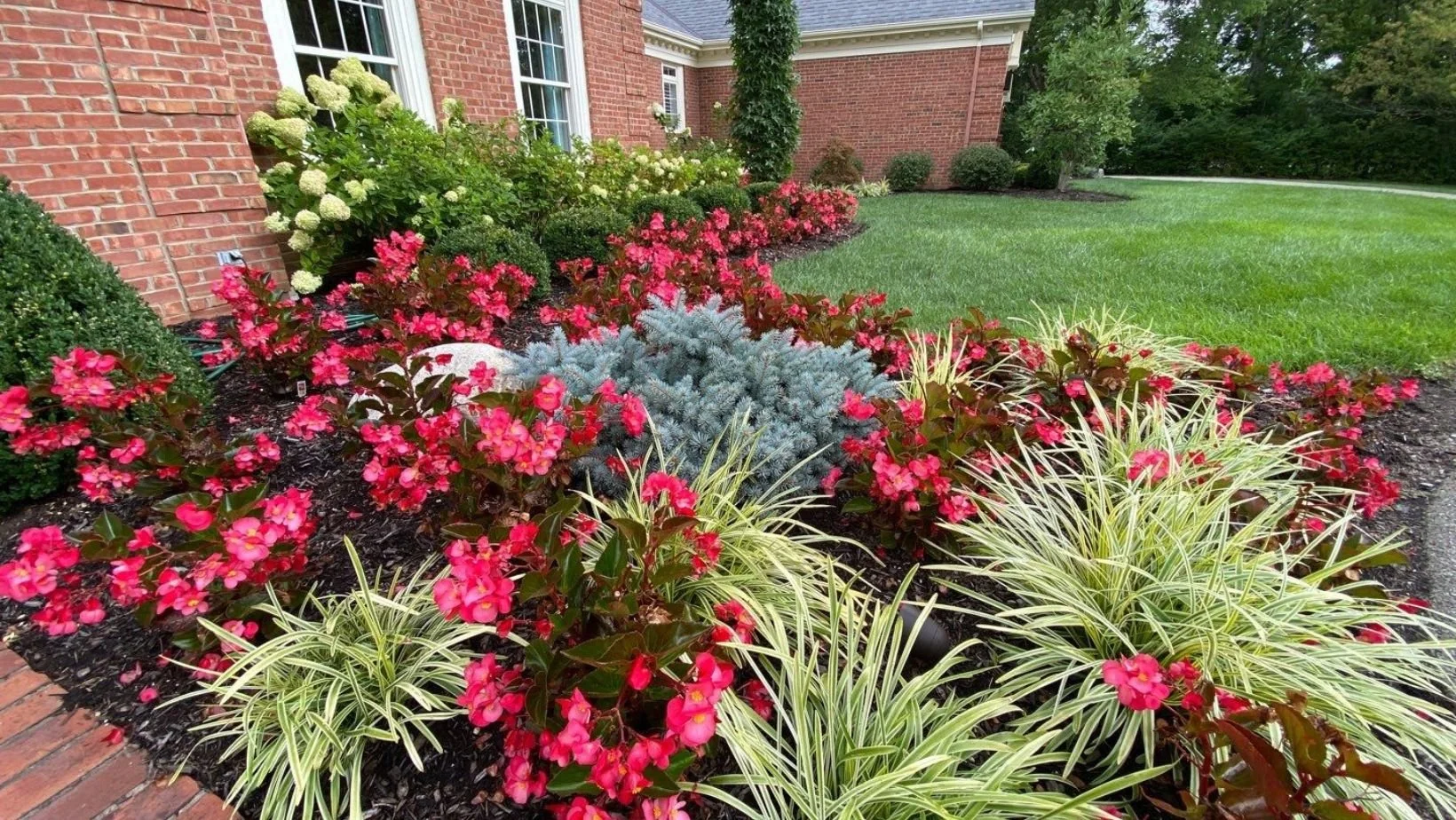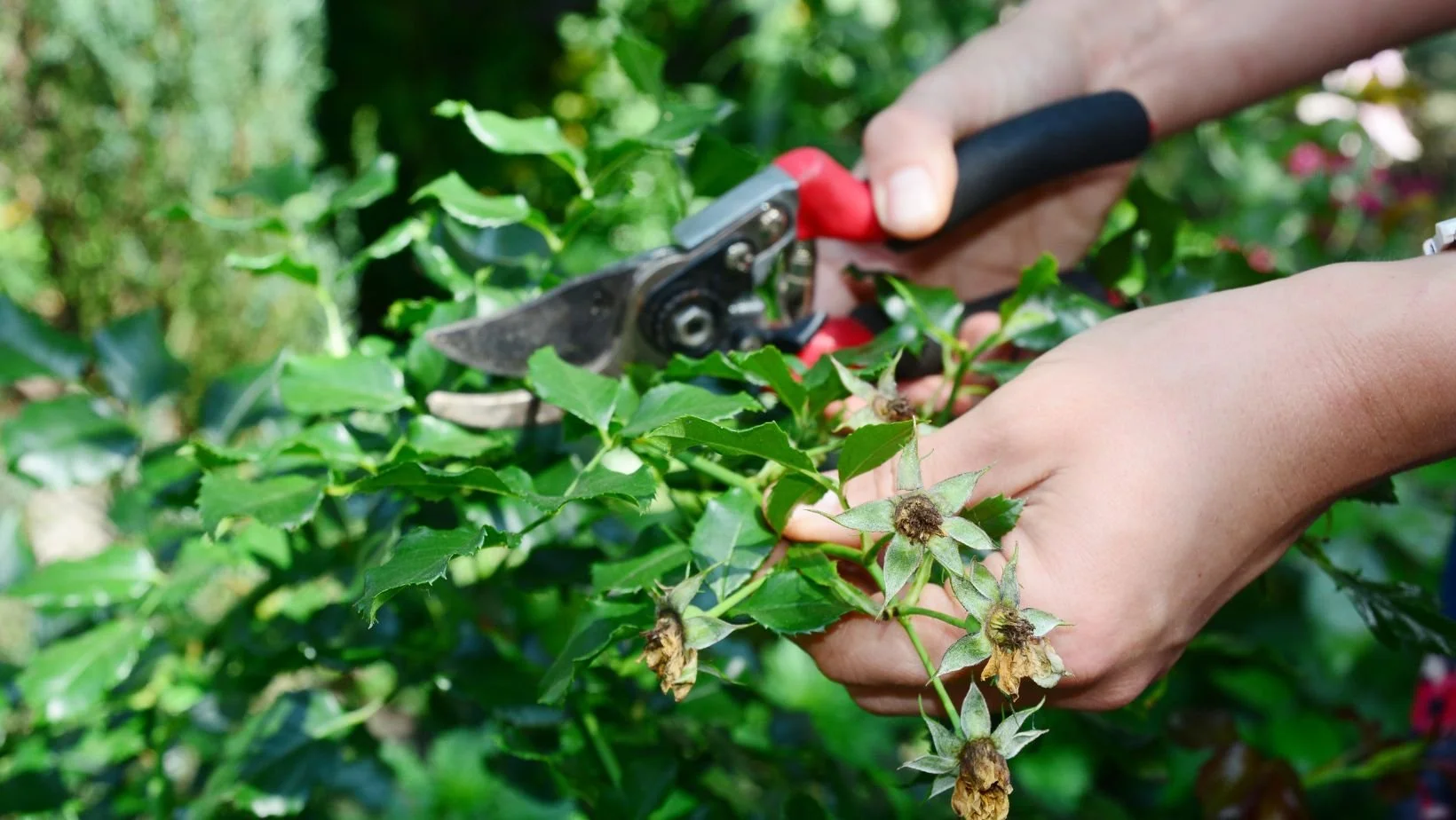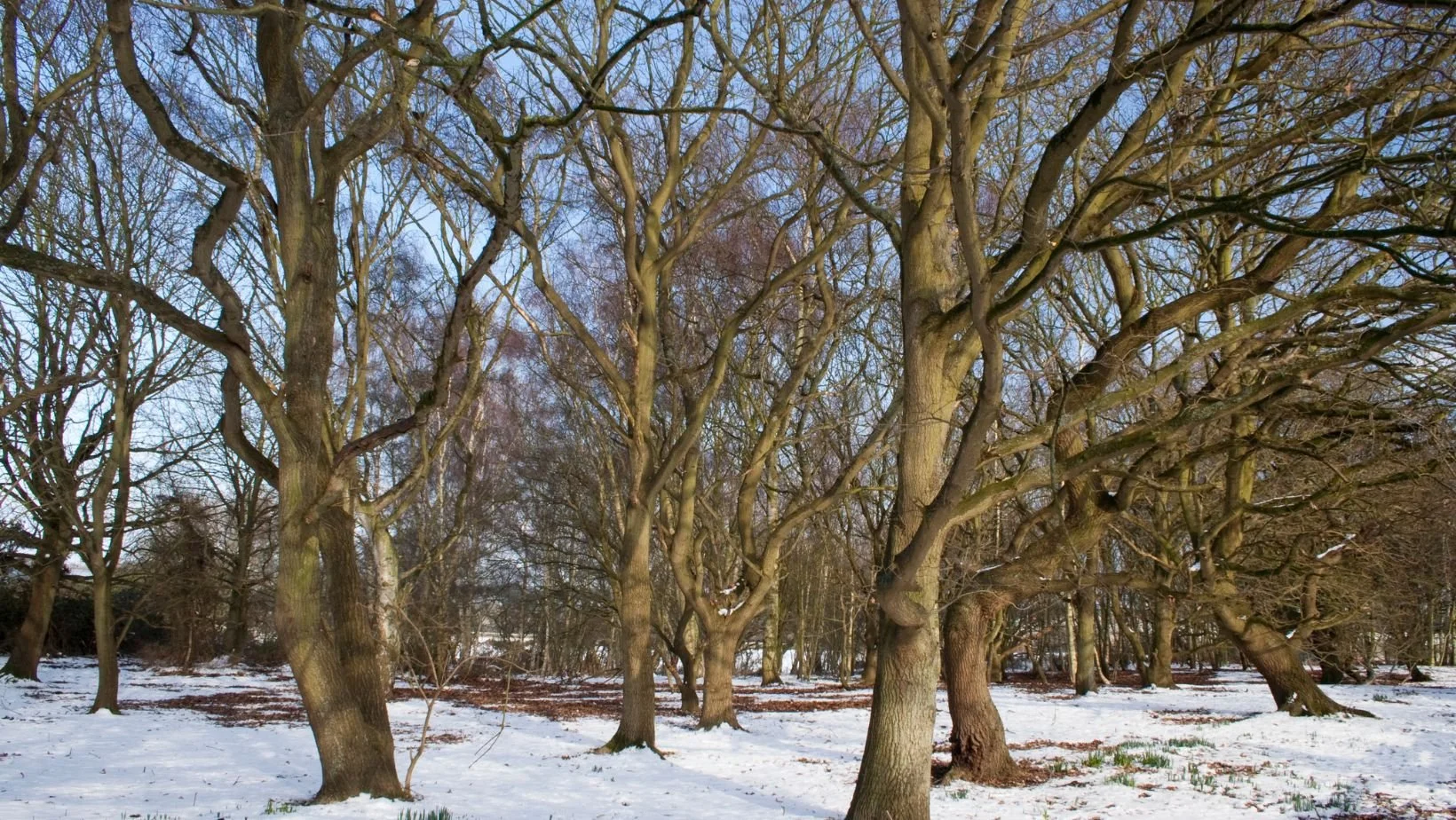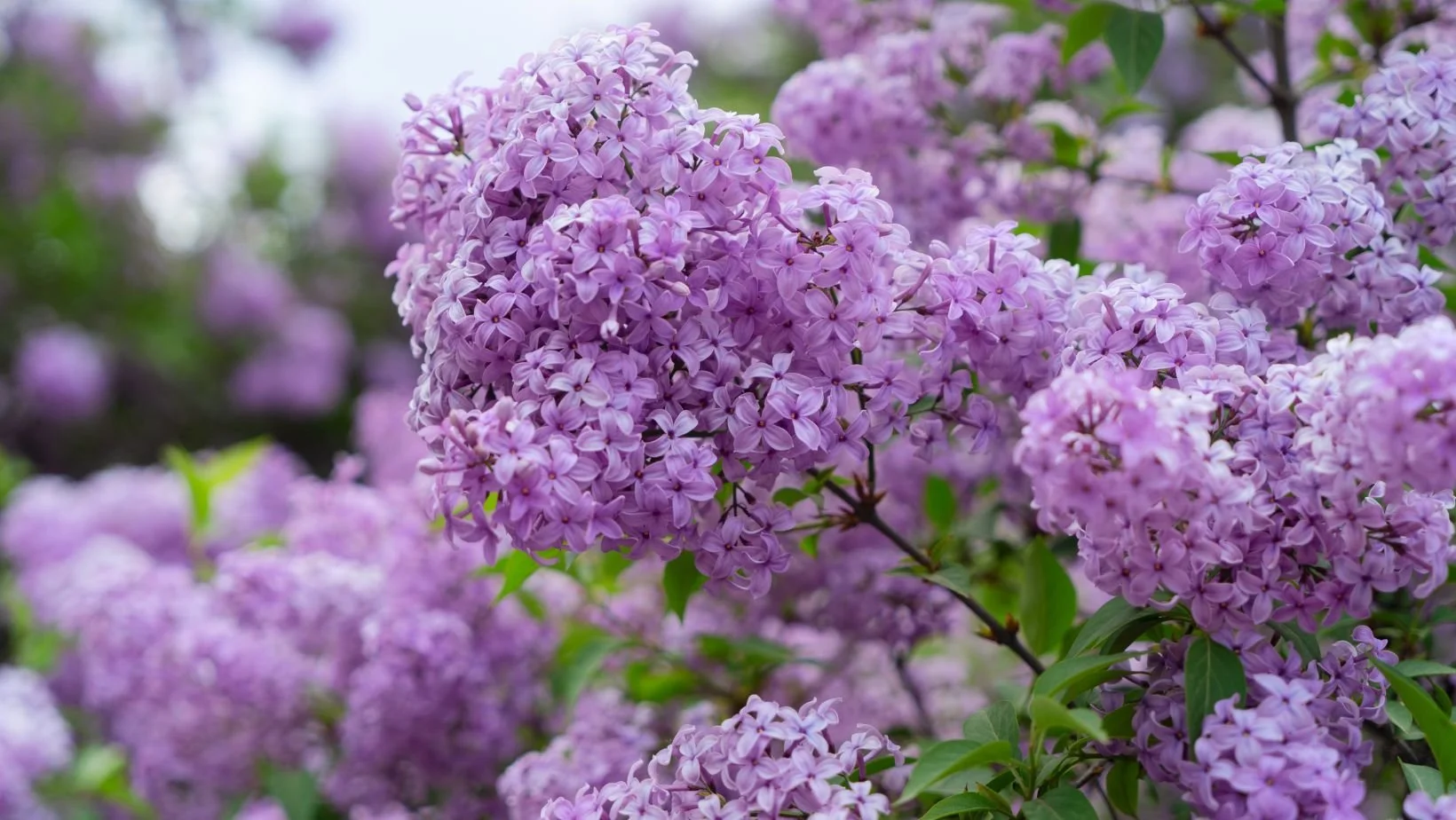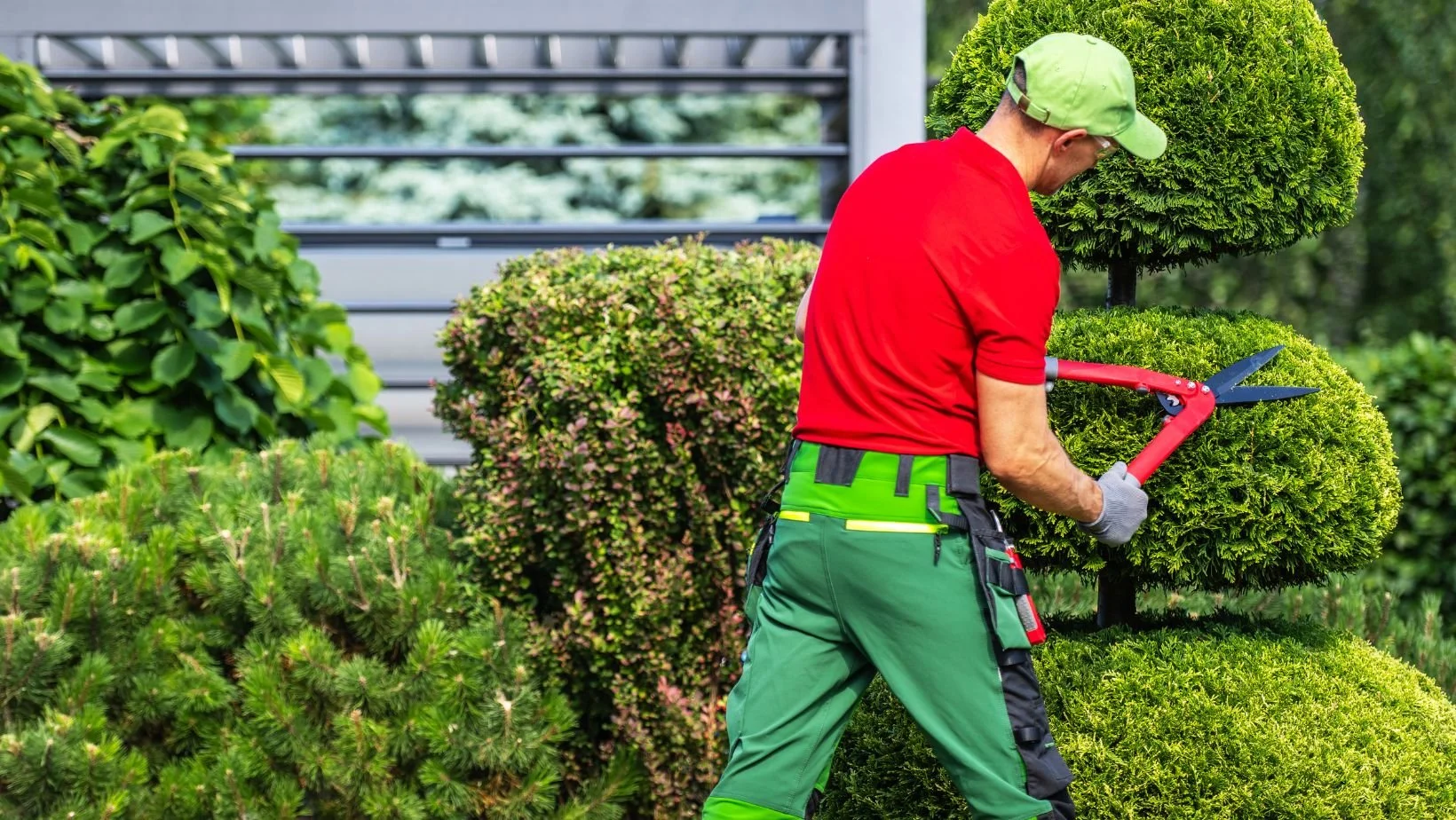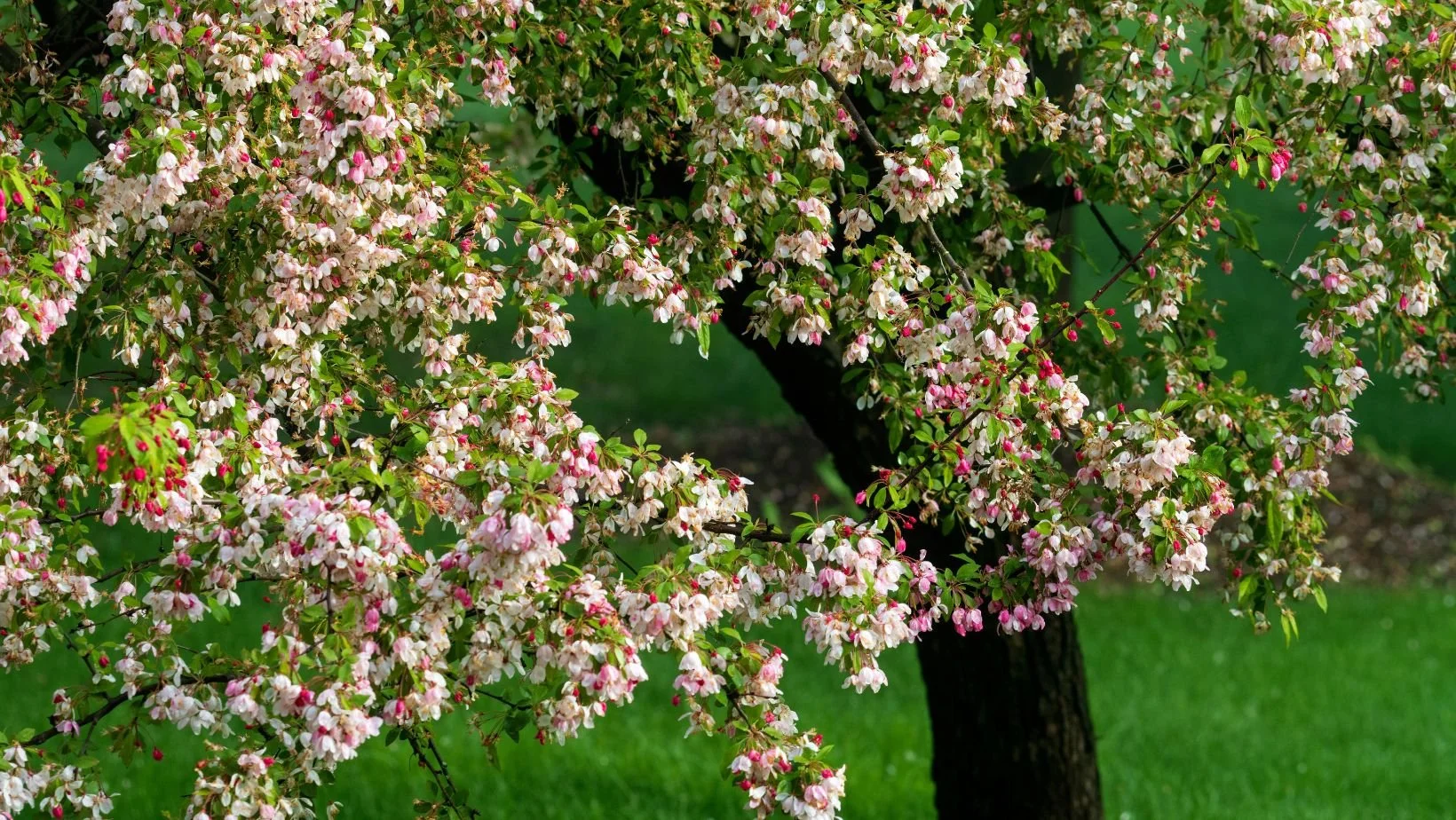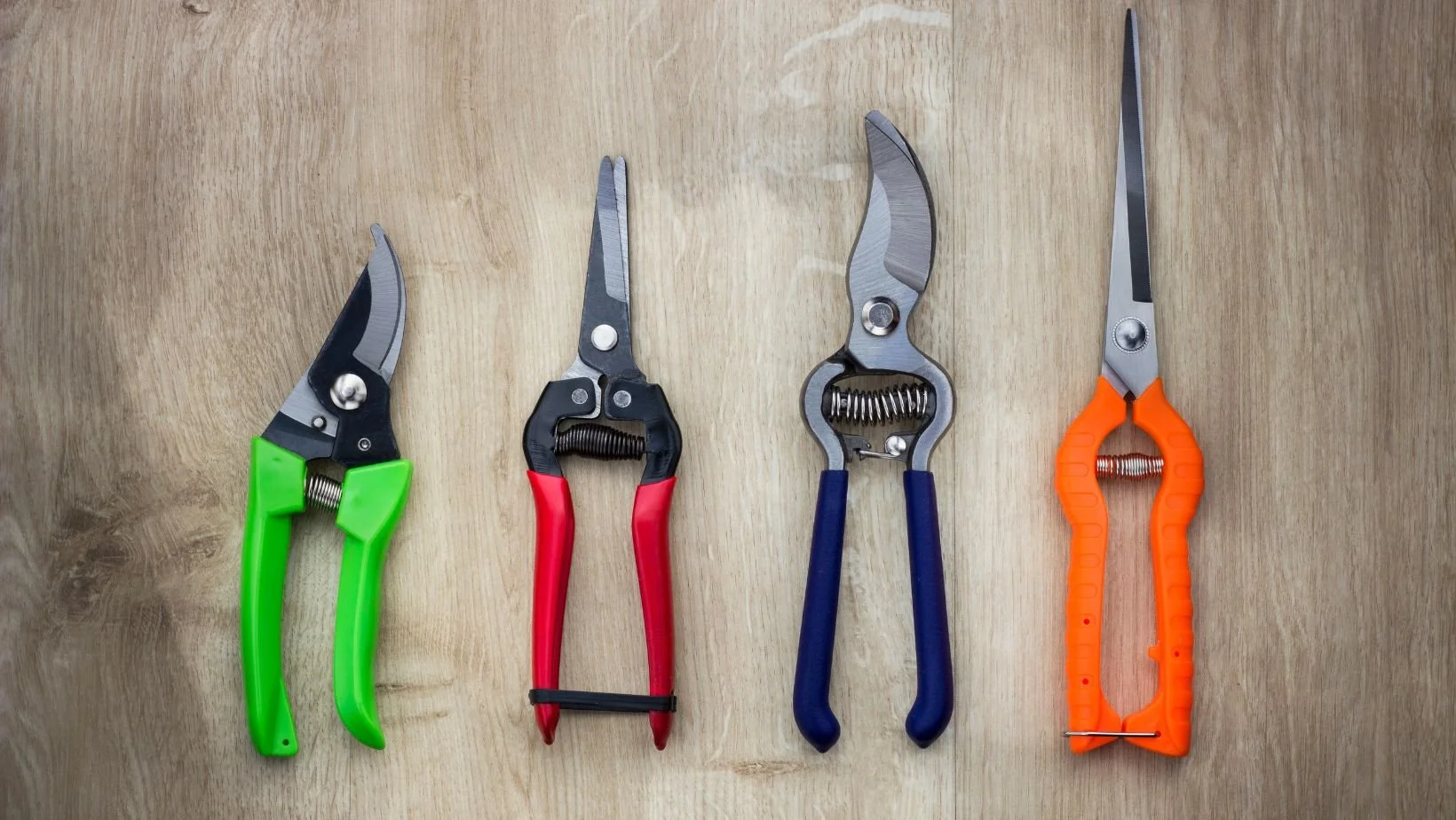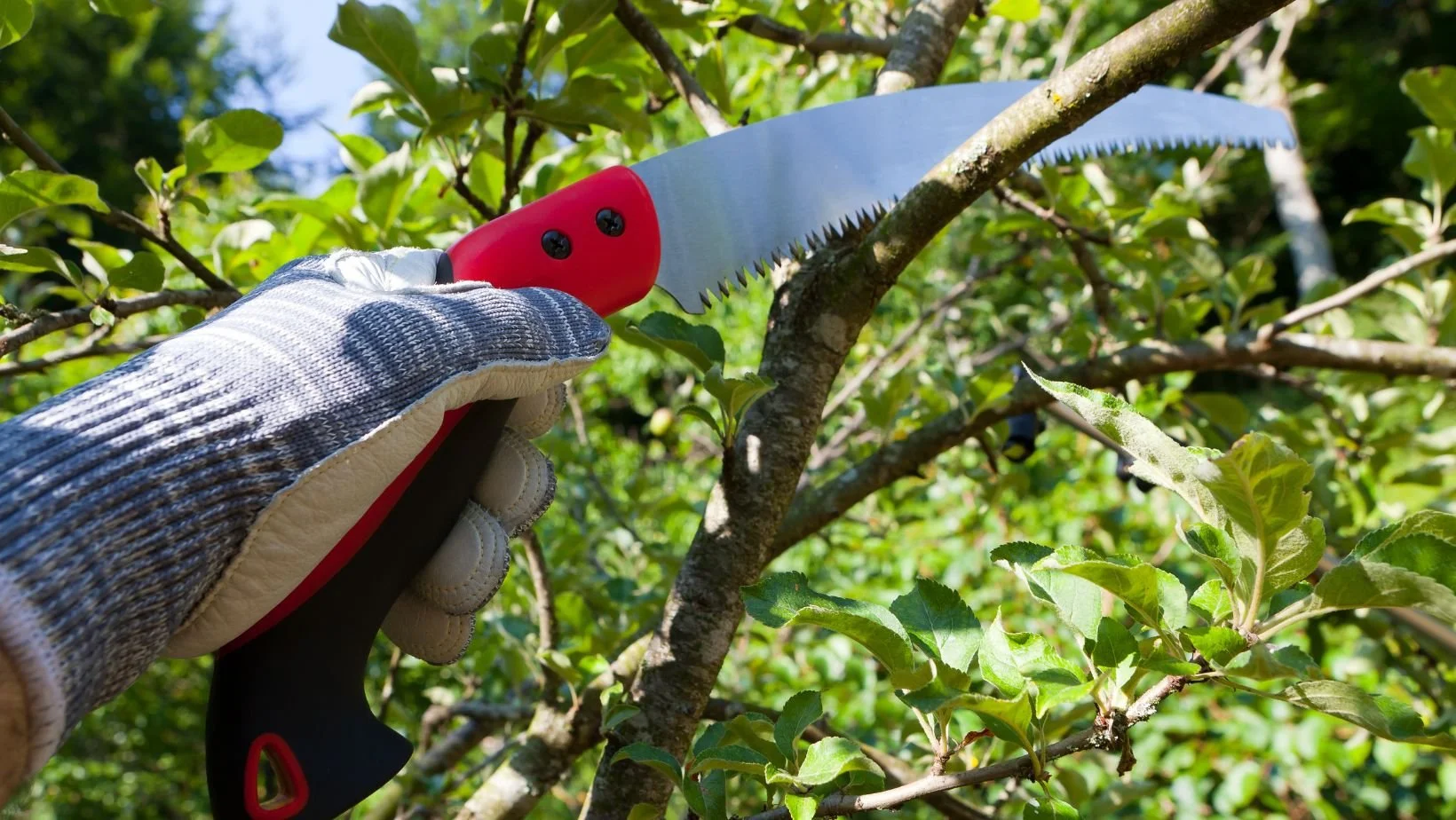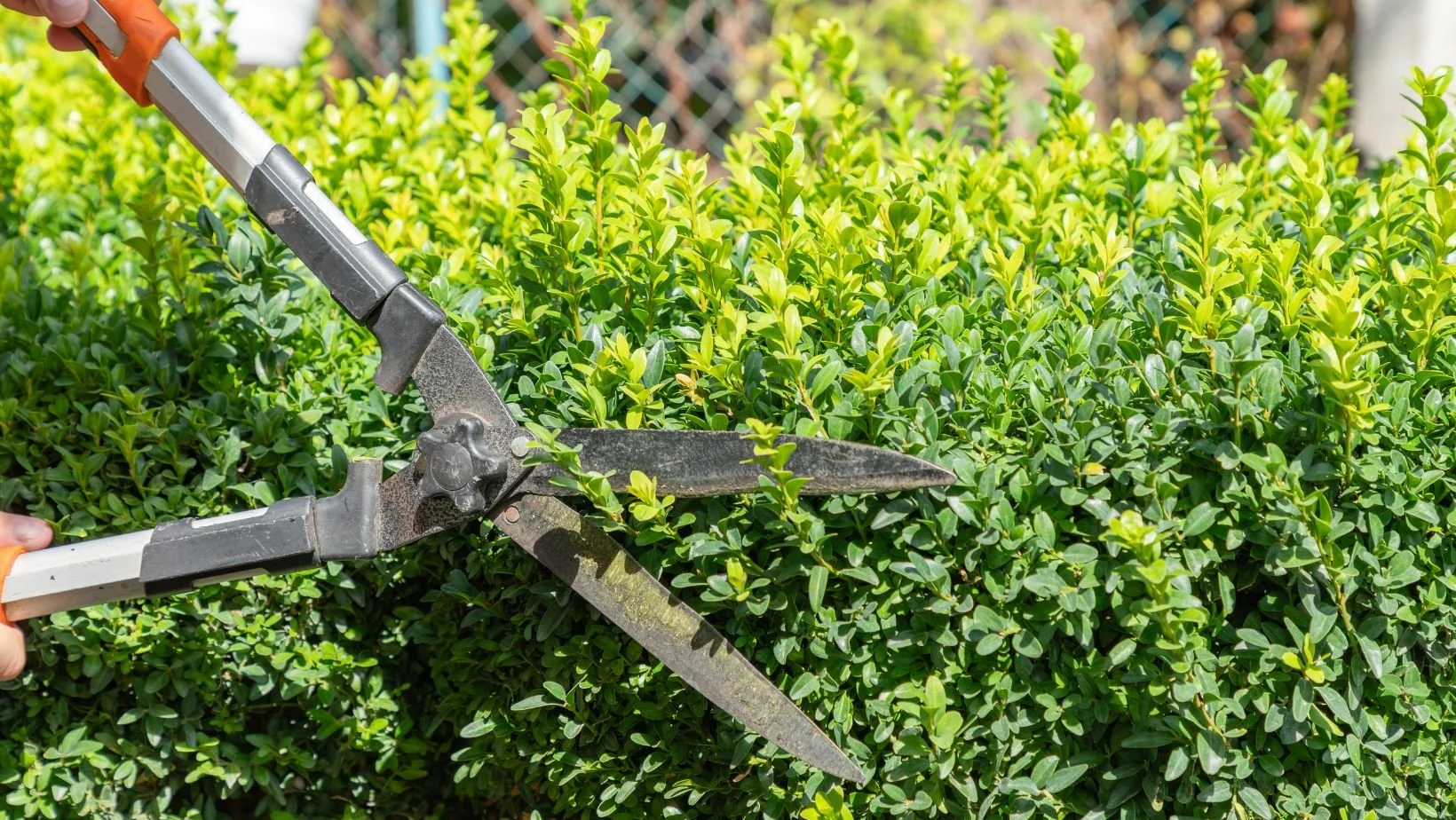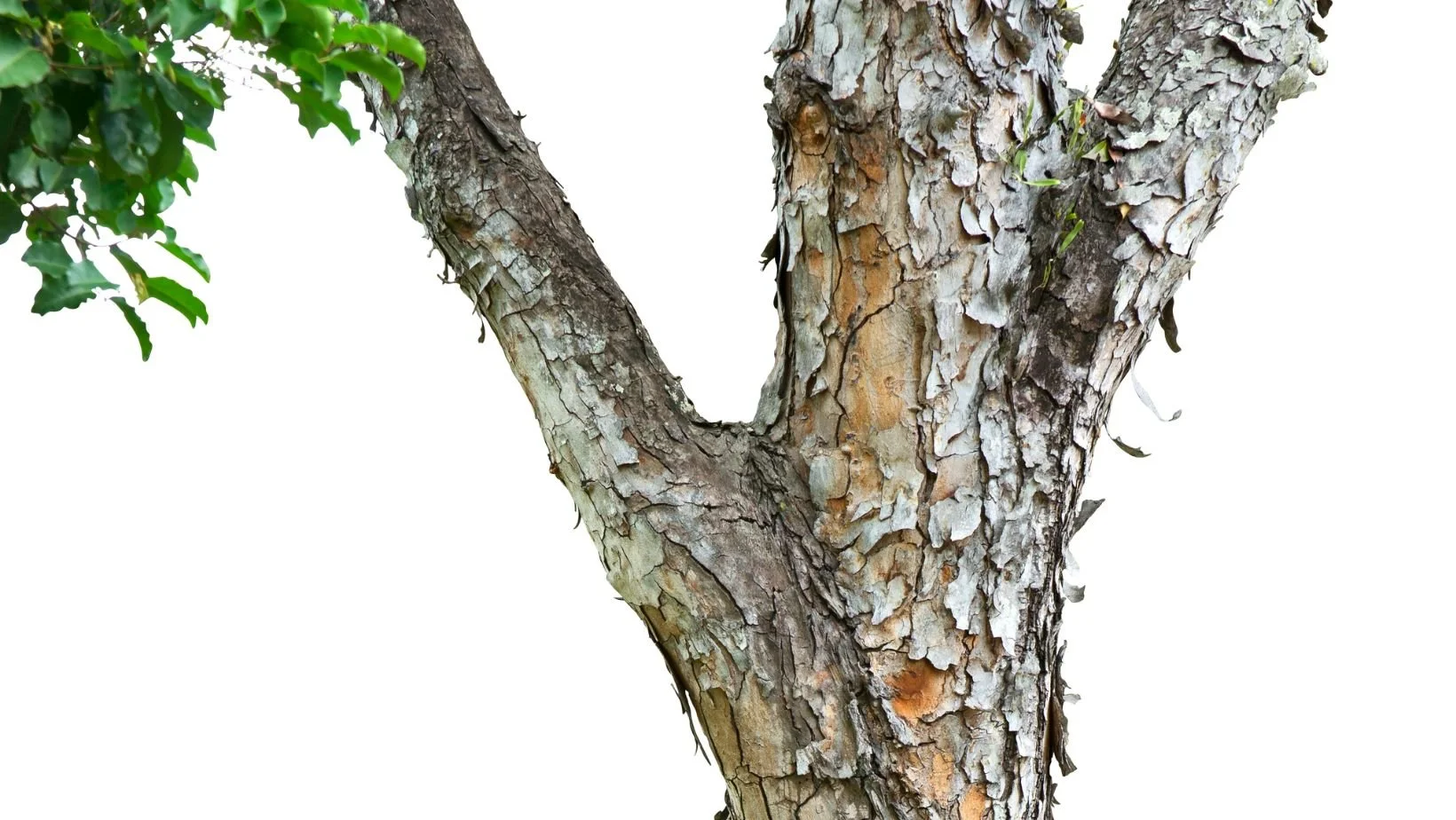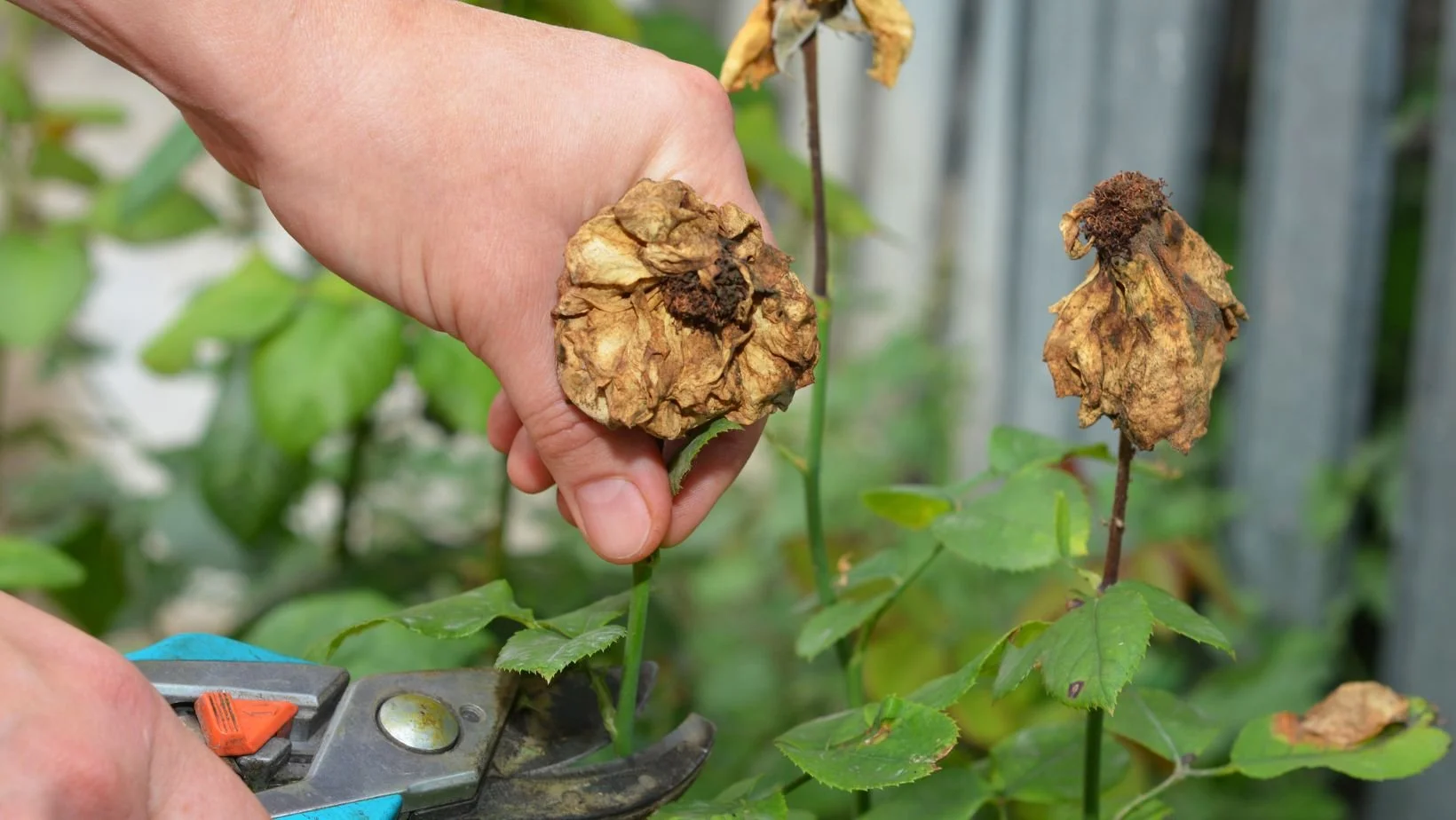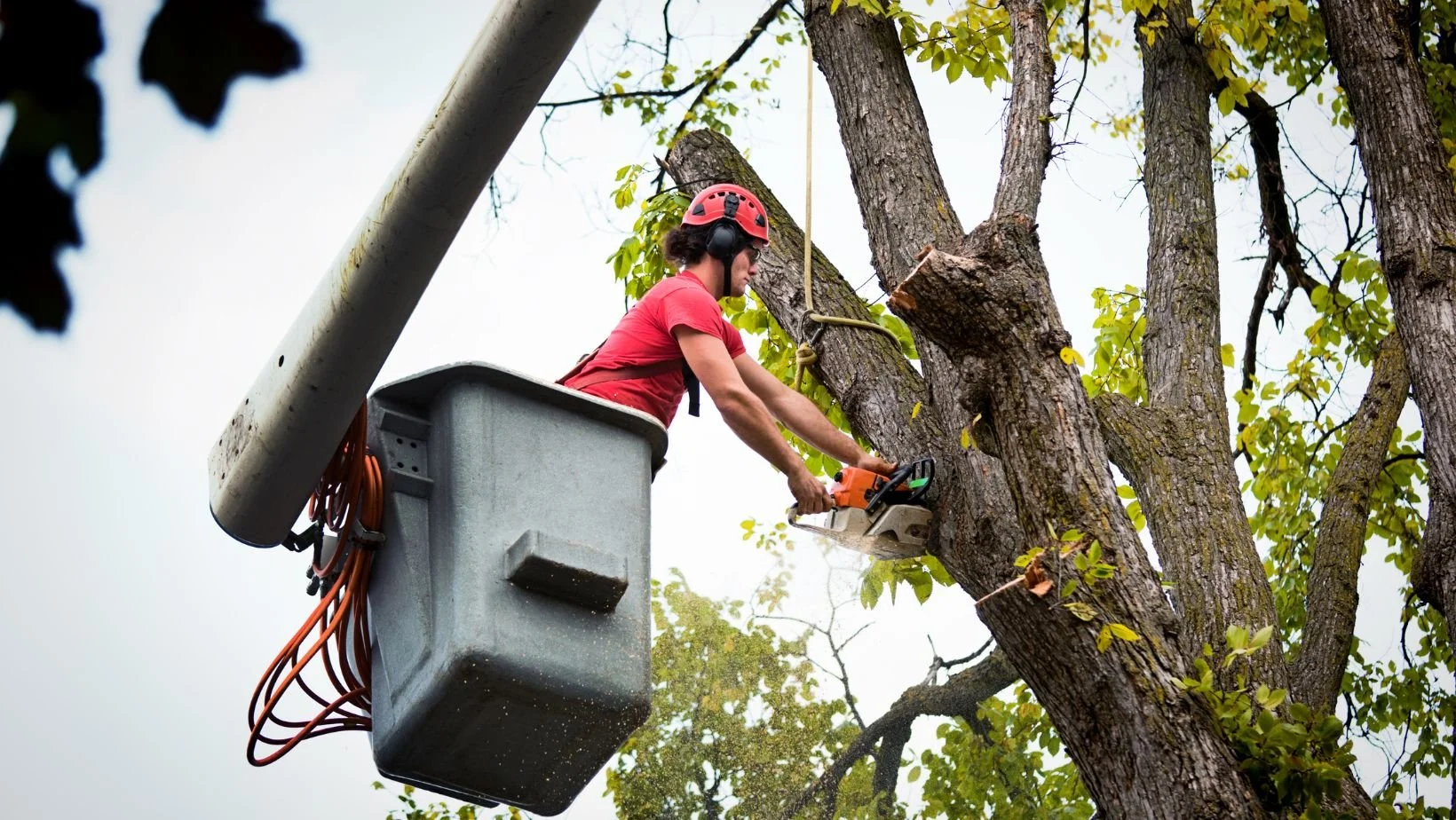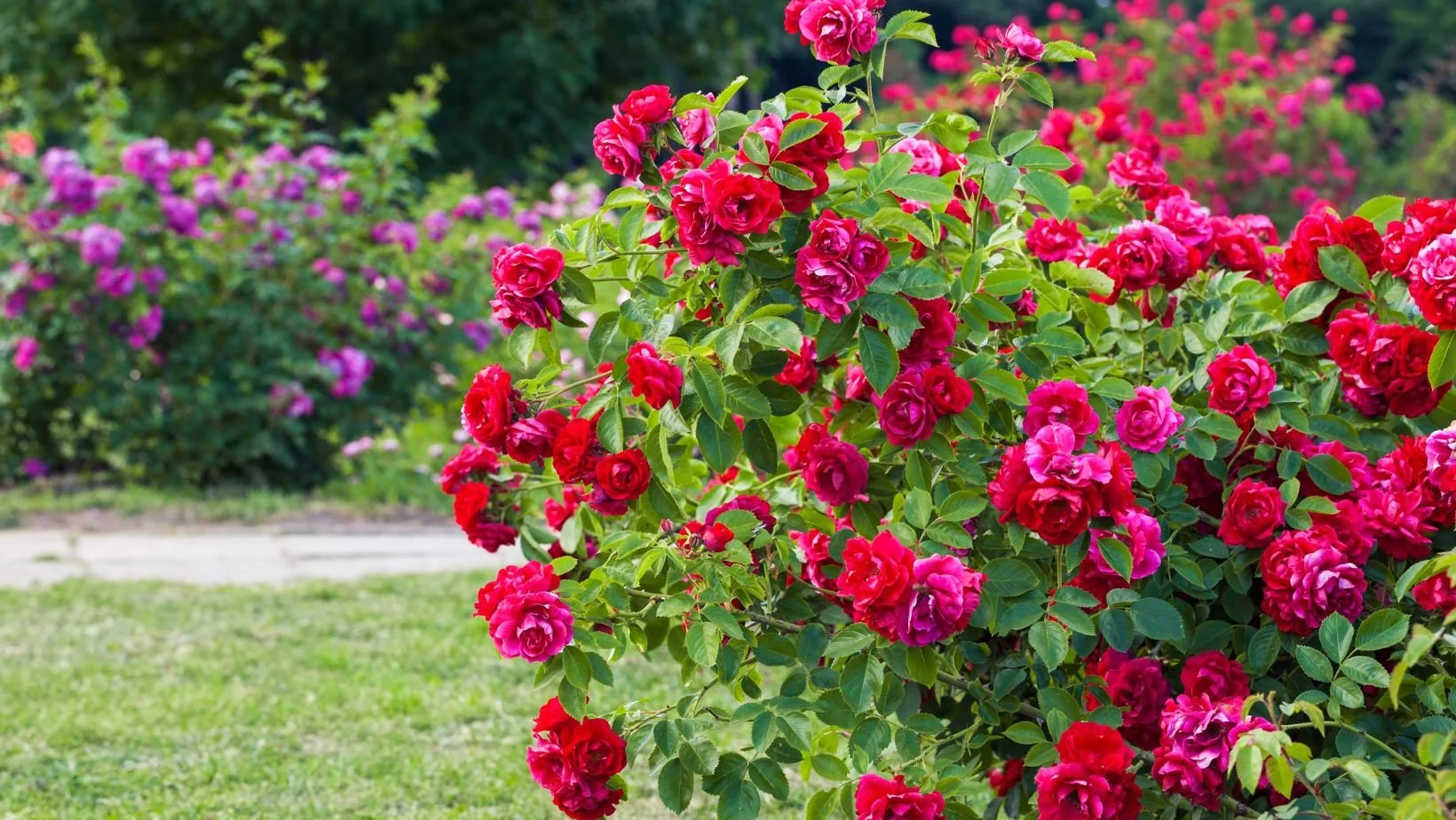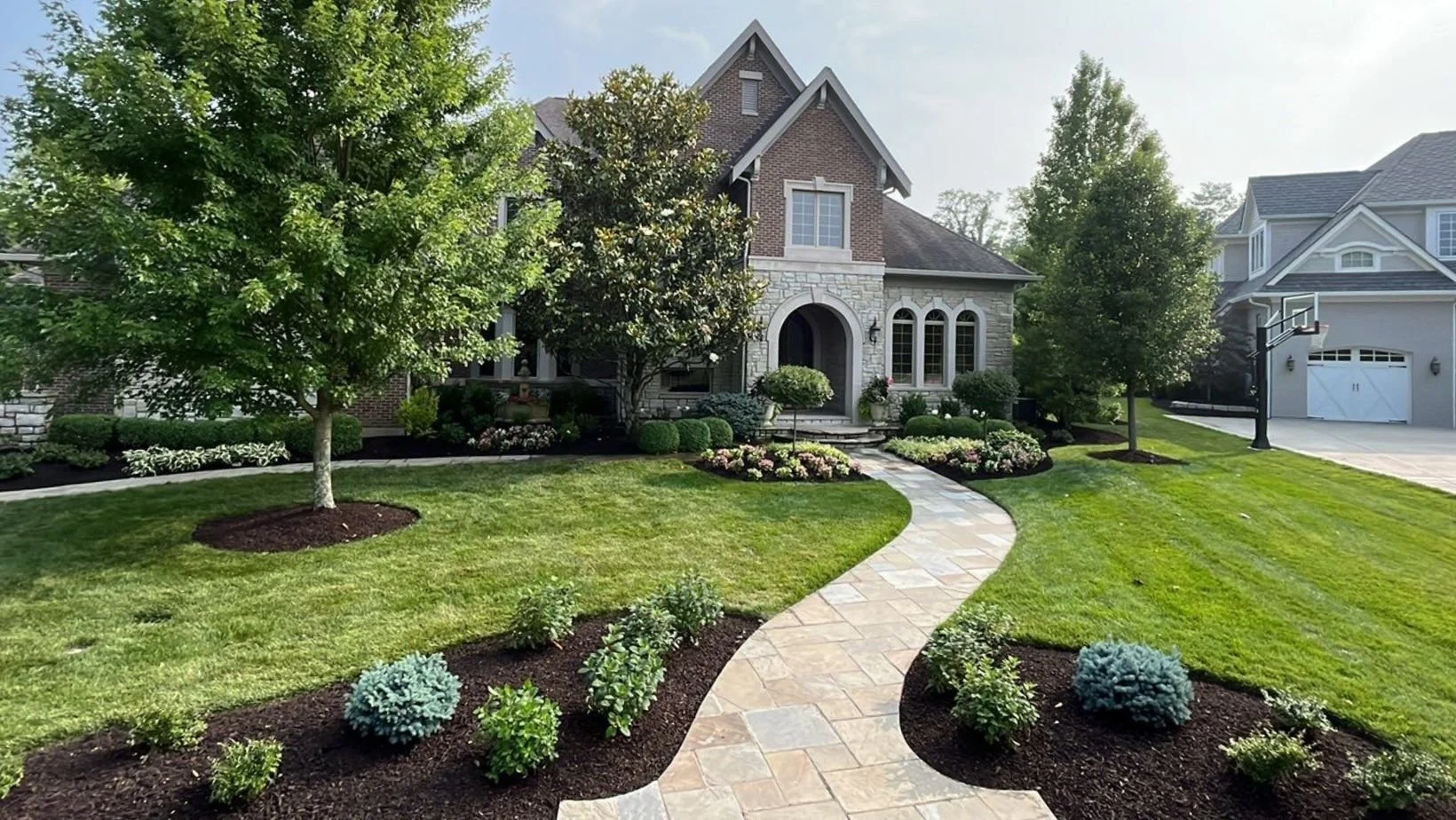You’ve seen the dying leaves and the wilted flowers. You know you need to do something to keep your yard’s foliage and flower beds alive. And pruning a plant has probably crossed your mind.
But what is pruning a plant? And who can do it? You’re not alone in asking these questions.
Many homeowners are willing to invest in professionally landscaping their yards, but decide to bring regular maintenance needs in house – before realizing they need help.
That’s where we come in.
The dedicated team of landscape designers and maintenance practitioners here at Seiler’s Landscaping have taken care of thousands of yards in the Greater Cincinnati region. When we design the yard of your dreams, we also strategize for plant care and aesthetics.
We know how to help your yard stay as healthy as it can. Because we also know, a healthy yard is a happy yard – and a happy you.
This article covers what plant pruning is, why it’s done and how, so you know what you’re getting when you select Seiler’s for your maintenance needs.
What Exactly Is Pruning a Plant? Making the Cut
At its core, pruning a plant is the selective removal of specific parts, like branches, buds or leaves. Our main goal when we prune is to improve the plant’s health, guide its growth, make it look better and boost its fruit or flower production. Watering your plants and your trees is just one part of the equation for a beautiful landscape.
Pruning is more than just snipping; it’s a deliberate process.
It’s a thoughtful action that helps your plants live longer and look better. This practice has been around for thousands of years, starting with farming and growing to include all kinds of garden and landscaping plants.
Every cut we make affects how the plant will grow and thrive.
Why Prune? The Benefits of Smart Cuts
Knowing what pruning means in a practical sense means understanding its many advantages. Because pruning really isn't optional – not when you want the healthiest and most attractive yard. It's a key part of good care for your trees, shrubs and plants that offers many benefits beyond just looks.
Here are six primary ways pruning can improve your landscaping.
1. Better Plant Health and Strength
Again, one of the main reasons to prune plants is to make them healthier. Removing dead, diseased or damaged (the "3 Ds") branches stops diseases from spreading and keeps pests away. It also helps the plant send energy to its healthy parts.
Good pruning also helps air move better through the plant, which prevents fungal problems. This careful attention helps your plants stay strong and resist future infections or issues.
2. Stronger Growth and Structure
Good pruning helps plants grow strong and balanced. By removing weak branches or ones that cross over each other, we can create a sturdy frame that can handle wind, snow or heavy fruit. This creates resilience and long-term success for a more lasting plant. It also fixes issues like branches rubbing together, which can cause wounds.
3. More Flowers and Fruit
For many flowering and fruit-bearing plants, pruning leads directly to more blooms and bigger harvests. Certain pruning methods encourage new wood that produces more flowers. For fruit trees, targeted cuts to branches can lead to bigger, better fruit. When you learn how to prune flowers for more blooms, you'll see a big difference.
4. Safer Landscapes
Overgrown or weak branches can be dangerous, especially near homes or walkways. They can fall over or blow down during strong winds or storms – a hazard and liability you won’t want the headache of dealing with. Pruning removes these risky limbs, making your property safer. This is especially important for large, mature trees in your yard.
5. Improved Appearance
In landscaping, pruning is essential for how plants look. It helps shape hedges, create unique topiary designs or train plants to grow flat against a wall. Pruning keeps plants at the right prune size and form, making sure they fit perfectly into your overall landscape design.
6. Bringing Old Plants Back to Life
For old, overgrown plants, strategic pruning can bring them back to life. By taking out old, unproductive wood, you can encourage strong new growth from the base. This method, often used when you prune shrubs or prune bushes that have become leggy, gives them a fresh start.
When to Prune? Timing Matters Most
Knowing when to prune is just as important as knowing how. The timing of your cuts greatly affects how a plant recovers and grows afterward.
The General Rule of Thumb: Dormant Pruning
For most trees that lose their leaves in winter, the best time to prune is during their dormant period. This is usually in the late winter to early spring, before new growth starts. This is generally the best time to prune shrubs, too. At this time, plants are less stressed, diseases are less active and it's easy to see the plant's structure without leaves.
Many homes have existing trees and shrubs on their properties. As such, many homeowners inquire about the best time to prune certain trees that have been long established, with deep root systems. These trees add to the aesthetics and character of a home, and it’s important to approach them with as much care as any new plantings.
The answer is, by pruning in the winter when trees and shrubs go dormant, you can allow them to heal well before they show off their new leaves in the spring.
Pruning Based on Bloom Time: A Key Difference
Flowering trees that bring color to your landscaping throughout spring, summer, and fall require a slightly different approach to pruning.
Spring-flowering plants and trees bloom on old, existing wood. These can include forsythia and lilac. Plants and trees like this that flower in early spring on growth from the previous year should be pruned right after they finish blooming.
If you prune these too late in the winter, you'll cut off next year's flowers. Another common flowering tree in Ohio that this approach applies to are crabapple trees.
Summer- and fall-flowering plants bloom on new wood. These plants produce blooms on the current year's growth. As such, they should generally be pruned in late winter or early spring, before new growth begins.
Certain types of landscaping favorites, like hydrangeas and many roses, fall into this group. For example, many homeowners want to know how to prune roses for more flowers. The roses complement their landscaping and more of a good thing is never bad. The answer is timing.
Pruning Evergreens: Special Care
Trees and plants that are evergreen can require special care when it comes to pruning. Many broadleaf evergreens benefit from light shaping in late winter/early spring or mid-summer. Pruning boxwoods, for example, is typically best done in the late spring or early summer, giving them time to recover before winter.
Conifers usually need very little pruning. When necessary, it's typically done in late winter/early spring or early summer after a growth spurt. Be careful not to cut into old, leafless wood on many conifers, as it might not grow back. This is important when thinking about when to prune certain favorite trees (like the tall and elegant arborvitae) many homeowners have incorporated in their landscaping.
Pruning for Specific Problems: The "3 Ds" Rule
No matter the time of year, branches that fall into the “3 Ds” category should be removed as soon as you spot them. Pruning dead, diseased or damaged branches is a vital health step that overrides all other timing rules. If you see a broken limb or a diseased section, remove it quickly to protect the rest of the plant. This applies to all plants, from large trees to small roses.
Common Timing Questions
Here are a few of the most common questions we see about pruning a plant and timing.
What’s the worst time to prune trees?
The worst time to prune trees is typically late summer or early fall. Pruning then can cause new, tender growth that won't harden before winter, making it vulnerable to frost damage. Avoid heavy pruning during very hot or dry weather.
Can I prune dogwood in summer?
While you can lightly remove dead or damaged wood from dogwoods in summer, heavy pruning at this time is generally discouraged. It can stress the tree and remove next year's flower buds.
Can you prune crabapple trees in the summer?
Similar to dogwoods, major summer pruning of crabapples should be avoided as it can remove flower buds and cause stress. Light trimming of water sprouts or suckers is usually fine.
When should you prune trees?
Again, the best time for major tree pruning (deciduous) is during late winter to early spring when they are dormant.
When should you prune oak trees?
Oaks are best pruned in late winter when dormant. This helps avoid attracting beetles that spread oak wilt disease, which are active in warmer months.
When should you prune a maple tree?
The best time to prune maple trees is generally late winter to early spring, before sap starts flowing heavily. Pruning later in spring or summer can cause "bleeding" (excessive sap flow), which usually doesn't harm the tree but can be messy.
When should you prune shrubs and bushes:
Pruning shrubs and bushes follow the same general rules as trees. It does depend on whether they bloom on old or new wood, or if they are evergreens.
How to Prune: Techniques for Success
The way you prune is an art of precision. Pruning requires the right tools and knowing exactly where and how to go about it.
The Right Tools
Professional pruning relies on sharp, clean tools. Dull tools can damage plant tissue, leading to slow healing and disease. Always clean your tools, especially between different plants or when cutting diseased wood, to stop diseases from spreading.
Bypass pruners: Best for smaller branches (up to ¾ inch thick), they make clean, scissor-like cuts.
Loppers: Used for thicker branches (up to 1.5-2 inches), offering more leverage.
Pruning Saws: Essential for branches over 2 inches thick, ensuring a clean cut without tearing bark.
Hedge shears: Mainly for shaping hedges to a uniform surface, not for cutting individual branches.
Making the Right Cut
Where and at what angle you cut greatly affects how a plant heals and grows.
The collar: Every branch has a slightly swollen area called the "branch collar" where it connects to the main trunk or a larger branch. This collar contains special cells that help the wound heal.
All cuts for branch removal should be made just outside this collar, never flush with the trunk. This allows the plant to seal the wound properly. This is crucial for pruning tree branches.
Angle of cut: For smaller cuts, a slight angle helps water run off. This prevents moisture from sitting on the plant or tree and causing rot.
The Three-Cut Method (for larger branches)
To prevent bark from tearing when a heavy branch falls, use this method for larger limbs:
Make an undercut about 6 to 12 inches from the trunk, cutting about a third of the way through from the bottom up.
Make a top cut a few inches further out from the undercut. The branch should break off cleanly here.
Make the final cut just outside the branch collar.
What Are Key Pruning Techniques?
Understanding why you make certain cuts helps you know how to prune plants for specific results.
Heading back (reduction cuts): This means shortening a branch or stem back to a healthy bud or a side branch. This makes the plant bushier and can reduce its overall size. When considering how to prune shrubs for more density, heading back is important.
Thinning out (removal cuts): This involves removing an entire branch back to where it started (a larger branch, trunk, or the ground). Thinning lets more light and air reach inside the plant, reducing disease and promoting stronger growth. This method is vital for how to prune a tree for its long-term health.
Deadheading: Removing faded or spent flowers. This encourages the plant to produce more blooms instead of seeds, extending its flowering season. When learning how to prune flowers or how to prune a rose bush, you should start on just above a strong outward-facing bud.
Pinching: Removing the soft, new tip of a stem, often with your fingers. This encourages the plant to branch out, leading to a fuller, more compact shape.
Shearing: Cutting a plant's surface evenly, typically done on hedges to maintain a formal look.
General Pruning Rules
When it comes to pruning plants and trees, there are a few general rules of (green) thumb to follow. These align with and include most of the more specific rules and advice for landscaping maintenance that have already been covered.
"Less is more" at first: If you're unsure, remove less. You can always take more off, but you can't put it back.
Know your plant: Each plant has its own growth habits and pruning needs. Researching your specific plants is key.
Step back and look: Regularly step away from the plant to see your work from different angles.
Always prioritize the 3 Ds: Dead, diseased, damaged wood should always be removed first.
Keep the natural shape: Aim to improve the plant's natural form, rather than forcing an unnatural one, unless you're creating a specific design like topiary.
Pruning Specific Plant Types
While the main ideas are the same, tailoring your approach to specific plants gets the best results.
Shrubs
Whether they flower or stay green, pruning shrubs and bushes often involves both thinning for health and heading back for shape. Knowing if a shrub blooms on old or new wood (as discussed in "When to Prune") is key. This particularly helps when you prune a bush for longevity.
Trees (Ornamental and Shade)
For young trees, focus on developing a strong main stem and well-spaced branches.
For mature trees, the goal shifts to keeping their structure strong, removing crossing branches, and ensuring clear space. Especially when considering how to prune a tree of significant size, landscape maintenance professionals or arborists are essential.
Roses
Roses need specific pruning for health, strength and more blooms. Pruning a rose bush typically involves removing weak, diseased or crossing canes, opening the center for air flow, and deadheading faded blooms.
Perennials
Many perennials benefit from deadheading to encourage continuous flowering and cutting back foliage for winter or rejuvenation.
Fruit Trees/Bushes
Pruning for fruit involves specific techniques to encourage fruiting, manage tree height for easy harvesting and ensure enough light for ripening fruit.
Common Pruning Mistakes to Avoid
Even with good intentions, some mistakes can harm a plant's health and appearance.
Over-pruning: Taking off too much at once can stress the plant, leading to weak growth or even decline.
"Topping" trees: This means severely cutting back large limbs to stubs. It's harmful, causes weak, fast-growing shoots that break easily, and often shortens the tree's life. Never do this.
Bad cuts: Leaving stubs (which invite disease) or cutting into the branch collar (which stops proper healing).
Using dull or dirty tools: This causes jagged cuts that heal poorly and increases disease risk.
Pruning at the wrong time: This can remove future flowers, stress the plant during important growth periods or cause tender new growth that's vulnerable to frost.
Not knowing the plant: Treating all plants the same way ignores their unique growth habits and needs.
Pruning Plants Is Good for Your Entire Yard
Pruning plants and trees entails more than just a technique. It's an informed way to maintain your carefully and thoughtfully designed landscape. By reaching out to a professional to help you achieve this goal, you will help your plants and trees grow healthier, stronger and produce more stunning blooms.
At Seiler’s Landscaping, we believe a well-pruned plant adds lasting beauty and strength to your outdoor living spaces. We offer comprehensive maintenance, performed by our experienced and friendly team, to ensure your yard is in optimal condition.
Check out our Seiler’s 360 Maintenance packages and how they can help your trees and plants grow to their fullest potential.
